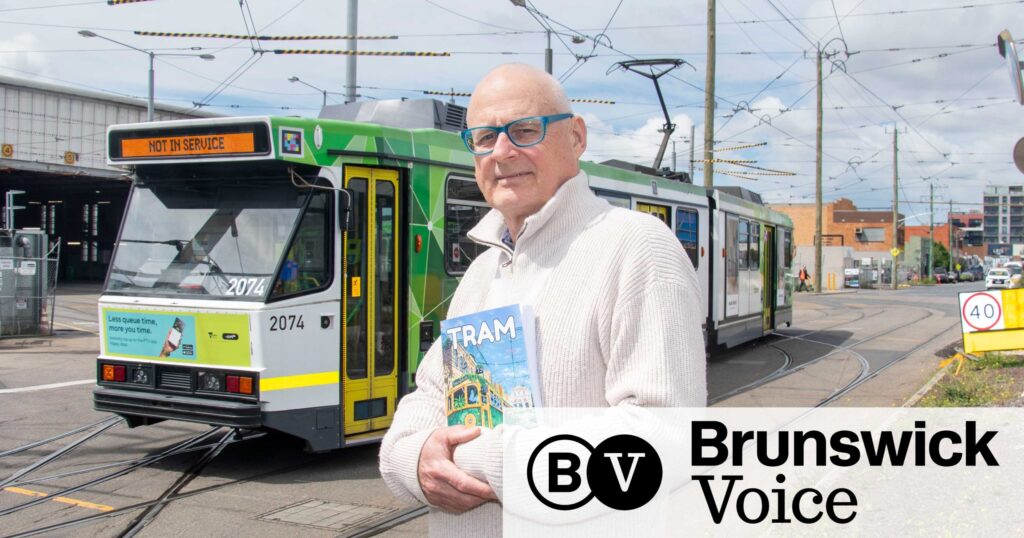
UPDATE: Brunswick author Greg Gardiner has just released a groundbreaking book titled Tram, blending history, memoir, and fiction to capture the essence of Melbourne’s iconic tram network. This 348-page work, featuring compelling illustrations, is a must-read for anyone interested in the city’s rich transport history.
In his meticulous research, Gardiner traveled every kilometer of Melbourne’s vast tram network. However, he insists his favorite route is the #19 along Sydney Road. “I think the 19 is absolutely magnificent,” Gardiner shared over coffee at a cafe near the Brunswick Tram Depot. “There’s so much history in the street; it’s right there in front of you. The trams are like characters in a novel.”
At 70 years old, Gardiner brings a unique perspective, having worked as both a tram conductor and driver. His book, which he worked on for over five years, incorporates 47 chapters that traverse time, weaving personal family stories into the fabric of Melbourne’s tram narrative. The book’s cover features a vibrant mural of a green W-class tram by artist Mike Makatron, emphasizing the book’s artistic appeal.
Tram not only details the history of Melbourne’s tram system, which spans 250 kilometers of double tracks and 24 routes, but also explores the emotional connection residents have with their trams. Gardiner aims to explain why trams continue to thrive in Melbourne while other cities abandoned theirs decades ago due to the rise of motor vehicles.
“Melbourne’s tram network is the largest in the world, with nearly 500 vehicles and over 160 million passenger rides each year,” Gardiner pointed out. He attributes the survival of this network to resilient figures in history, including Robert Rissom, a Major-General in World War Two, who fought to keep the trams operational during challenging times.
Gardiner’s narrative takes readers on an immersive journey, as he retraces tram routes while engaging with fellow passengers about their unique tram stories. “Trams are central to the development of Melbourne,” he emphasized. “They connect people to work, family, and community events, shaping the city’s character.”
With the tram system now using renewable energy since 2019, Gardiner believes trams will remain vital to Melbourne’s future transport infrastructure. He advocates for doubling the number of trams to combat increasing traffic congestion, stating, “If we add another million cars over the next decade, we’re heading for gridlock.”
Readers can borrow Tram from the Brunswick Library or order it as a paperback through Books Online and Amazon. Gardiner’s work is not just about trams; it’s a heartfelt reflection on Melbourne’s identity and the communal experience they provide.
As the city continues to evolve, Gardiner’s insights remind us of the enduring legacy of trams in Melbourne’s history and their pivotal role in the lives of its residents.
Next Steps: Keep an eye on local libraries and bookstores for this essential read, as it promises to reshape your understanding of Melbourne’s transport heritage and its impact on community life.






